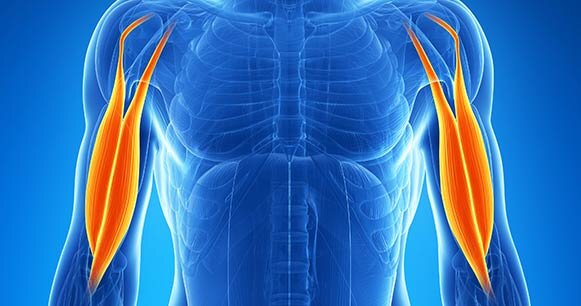Bicep Tendon issues and repairs
Many people hit the gym to get their beach body where they’d like it to be before the summer, but there are sometimes issues with pain or inflammation that can get in their way.
Biceps tendonitis is the technical term for irritation or inflammation in your upper biceps tendon, which attaches your biceps (the muscle located at the front of your upper arm) to your shoulder bones. Tendons are tough strips of connective tissue which connect muscles to bones and let you move your arms, legs, and other body parts, and your biceps muscle has three of them: two that attach it to your shoulder bones and one that attaches it to your radius, one of your two forearm bone, at your elbow.
What are some of the causes for a bicep tendon injury?
Biceps tendon damage is most often simply the result of wear and tear due to normal daily use. Tendons age just like everything else in our bodies, and as we age they tend to weaken and degenerate just from being used every day over a lifetime. This slow degeneration can be accelerated by overuse or repeating the same motions over and over.
What are the symptoms of a bicep tendon injury?
If you tear your biceps tendon, the most obvious symptom will be pain—sudden and severe pain. Depending on where the tendon is injured, you may feel this in your upper arm or at the elbow. You may feel or even hear a popping sound when the tendon tears.
Other signs that you might have torn your biceps tend are:
A sudden, sharp pain at your shoulder or in your elbow as the tendon tears
Bruising of your upper arm in the injured area
Weakness in your shoulder or your elbow as the muscle becomes detached
Difficulty turning your arm and hand between palm-up and -down positions, as the detached muscle is unable to do its work
The front of your upper arm may appear misshapen if the tendon is torn completely. Muscles, when properly attached, are stretched like rubber bands. When the tendon tears, it no longer holds one end in place and the muscle recoils, forming a bulge in your arm.
What are the treatment options for a bicep tendon injury?
While surgery may be necessary to repair a torn biceps tendon, many people are able to function normally without a surgical repair. The appropriate treatment depends on the type of injury and its severity, and in many cases symptoms can be relieved by the same treatments used for tendonitis. Tears that occur at the elbow require surgical repair more often than those at the shoulder.
Some surgical procedures can be done arthroscopically, using small incisions rather than a single large one, although open surgery has very good results and is the one that I prefer.
Surgical repairs for a biceps tendon injury may include:
Reattaching the remaining tendon to the bone. This procedure is called a biceps tenodesis.
